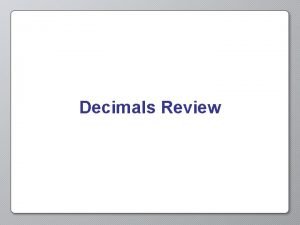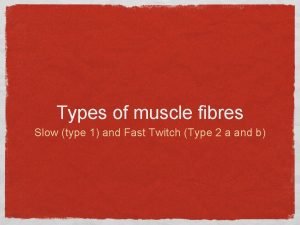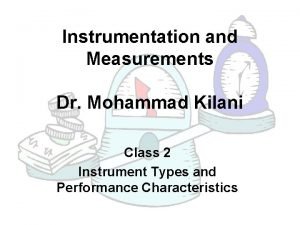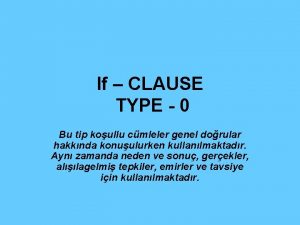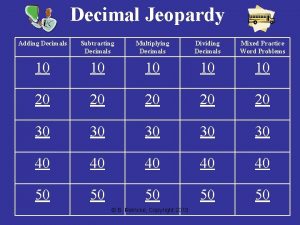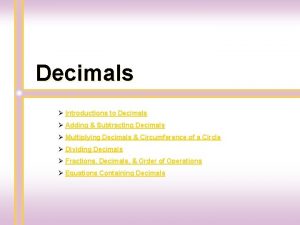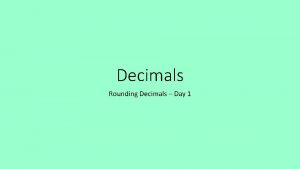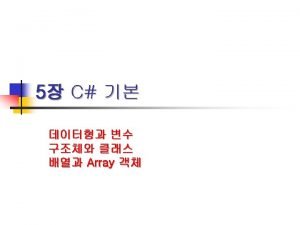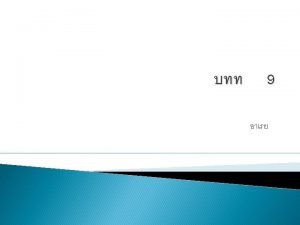Decimals Review Decimals Decimals are a type of

















- Slides: 17

Decimals Review

Decimals • Decimals are a type of fractional number • The denominator is always a power of 10 • A decimal point is used to show that it is less than 1 The decimal. 5 represents the fraction 5/10 The decimal. 25 represents the fraction 25/100 What decimal is represented by the fraction 461/1000? 0. 461

Significant Digits or Figures • They are the digits after the decimal point and after any zeros • Trailing zeros count as significant digits 0. 0005670 4 significant digits 3

Significant Digits or Figures • Significant digits are the most important parts of the number • They tell you how precise a number or measurement is

Positions • Positions tell us how much each digit is worth, like they do for whole numbers • They are the number of spaces each digit is behind the decimal point 0. 0000 tenths hundredths ten thousandths

Math With Decimals Four basic functions • Add • Subtract • Multiply • Divide

Addition • Line up the decimal points to make sure everything is in the correct column • Add like you would integers 0. 587 + 0. 036 = 0. 587 + 0. 036 0. 623

Addition - Let’s Try It! 0. 4 + 0. 6 = + 0. 6 1. 0 0. 27 + 0. 05 = 0. 27 + 0. 05 0. 32

Subtraction • Line up the decimal points to make sure everything is in the correct column • Subtract like you would integers 0. 587 - 0. 036 = - 0. 587 0. 036 0. 551

Subtraction - Let’s Try It! 0. 7 - 0. 3 = 0. 27 - 0. 09 = - 0. 7 0. 3 0. 4 - 0. 27 0. 09 0. 18

Multiplication • Move the decimal point of the first number to the left one space for each position behind the decimal point of the second number • Multiply that new number by the whole number value of the second number (ignore decimal point) • Make sure to fill in any missing zeros 0. 07 x 0. 3 = 0 0 07 x 3 = 0. 021 One position behind decimal

Multiplication Examples 0. 61 x 0. 2 = 0 0 61 x 2 = 0. 122 One position behind decimal 0. 0048 x 0. 04 = 0 00 0048 x 4 = 0. 000192 Two positions behind decimal

Multiplication - Let’s Try It! 0. 01 x 0. 1 = 0. 001 0. 33 x 0. 2 = 0. 066 0. 09 x 0. 02 = 0. 0018 0. 012 x 0. 7 = 0. 0084 0. 4 x 0. 007 = 0. 0028 0. 5 x 0. 001 = 0. 0005

Division • Like multiplication, but move the decimal point of the first number to the right one place for each position behind the decimal point of the second number • Divide the new number by the whole number value of the second number (ignore decimal point) 0. 08 ÷ 0. 4 = 0 0 8 ÷ 4 = 0. 2 One position behind decimal

Division Examples 0. 61 ÷ 0. 2 = 0 6 1 ÷ 2 = 3. 05 One position behind decimal 0. 0048 ÷ 0. 04 = 0 00 48 ÷ 4 = 0. 12 Two positions behind decimal

Division - Let’s Try It! 0. 01 ÷ 0. 1 = 0. 1 0. 33 ÷ 0. 2 = 1. 65 0. 09 ÷ 0. 02 = 4. 5 0. 009 ÷ 0. 03 = 0. 3 0. 4 ÷ 0. 008 = 50 0. 56 ÷ 0. 07 = 8

Review • Decimals are fractional numbers where the denominators are powers of 10 • Significant digits tell you how precise the number is • Decimals add and subtract like integers • Multiplying two decimals makes a smaller decimal • Dividing two decimals makes a larger number
 Insidan region jh
Insidan region jh Decimals review
Decimals review Chapter review motion part a vocabulary review answer key
Chapter review motion part a vocabulary review answer key Ap gov review final exam review
Ap gov review final exam review Narrative review vs systematic review
Narrative review vs systematic review Narrative review vs systematic review
Narrative review vs systematic review Narrative review vs systematic review
Narrative review vs systematic review Is hyper v type 1 or type 2
Is hyper v type 1 or type 2 What is the primary function of wave summation
What is the primary function of wave summation Type 1 error and type 2 error in statistics
Type 1 error and type 2 error in statistics Type 1 error vs type 2 error example
Type 1 error vs type 2 error example Rock cycle sedimentary
Rock cycle sedimentary Narrow band theory in sport
Narrow band theory in sport Mbti breakdown
Mbti breakdown Myotonic dystrophy.
Myotonic dystrophy. Non smart instruments
Non smart instruments Type 0 nedir
Type 0 nedir Hypothesis testing meaning
Hypothesis testing meaning

